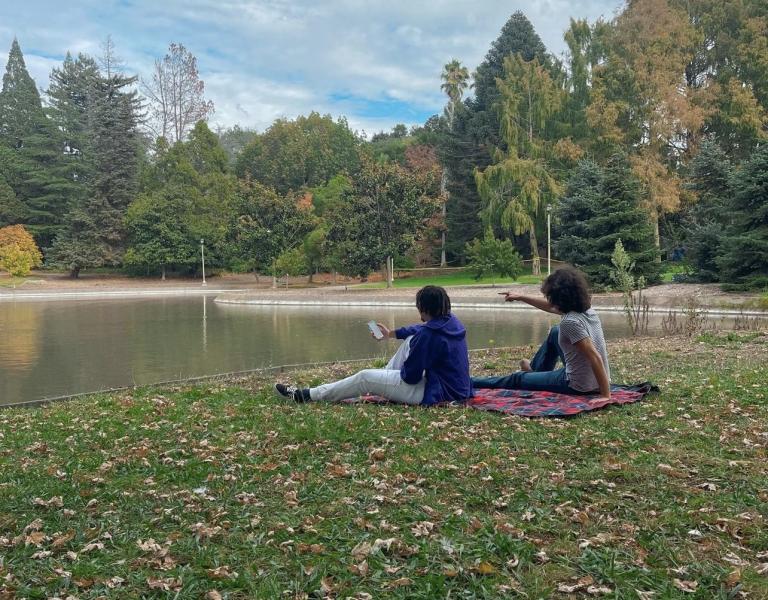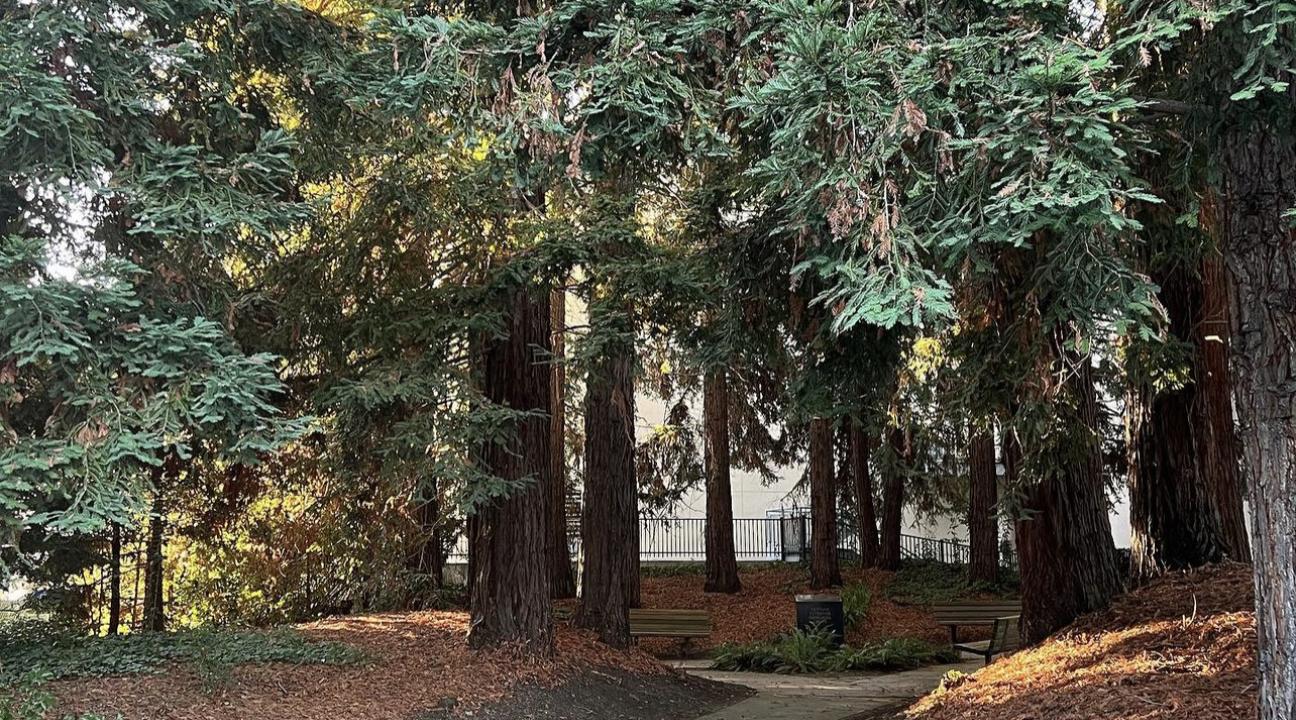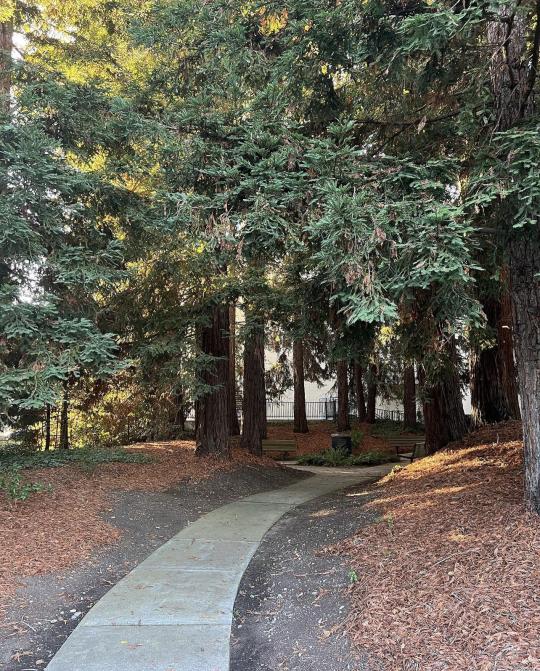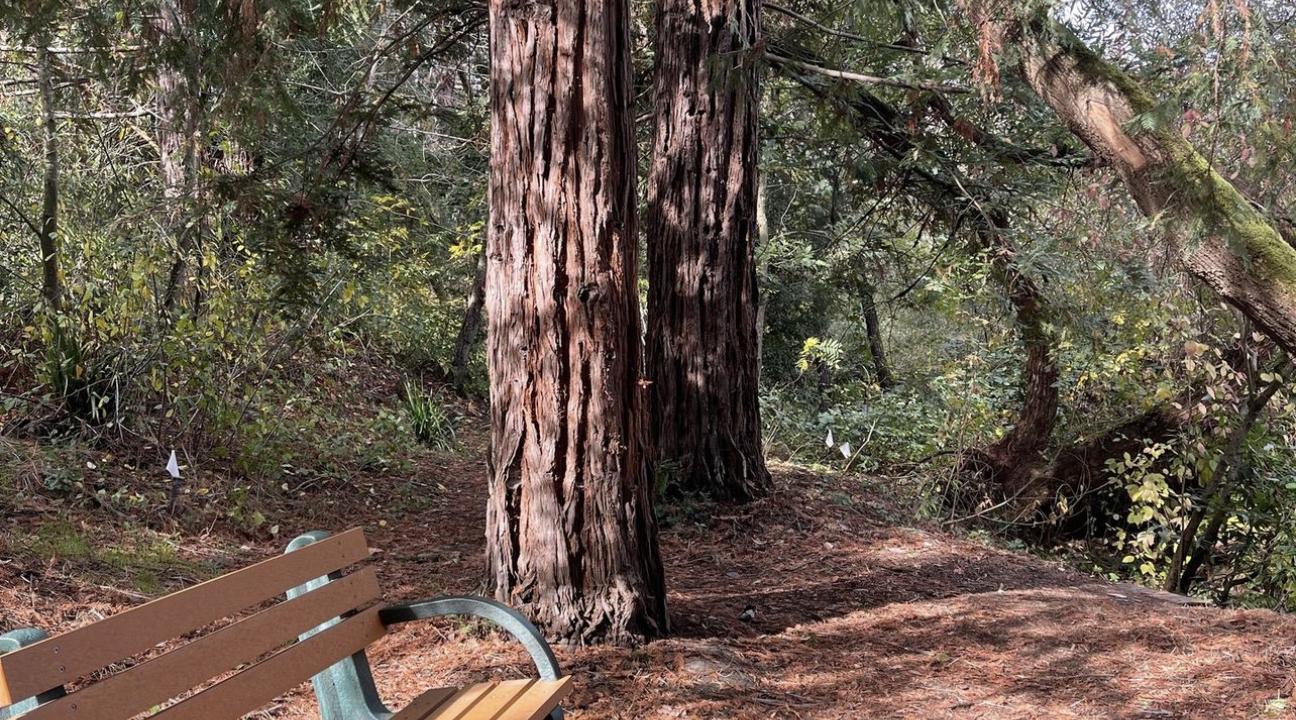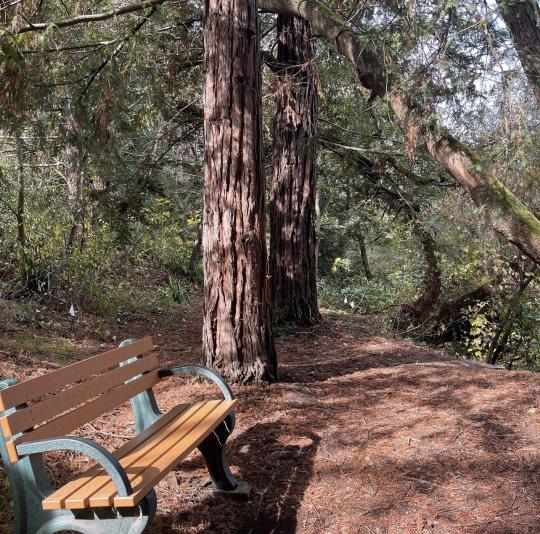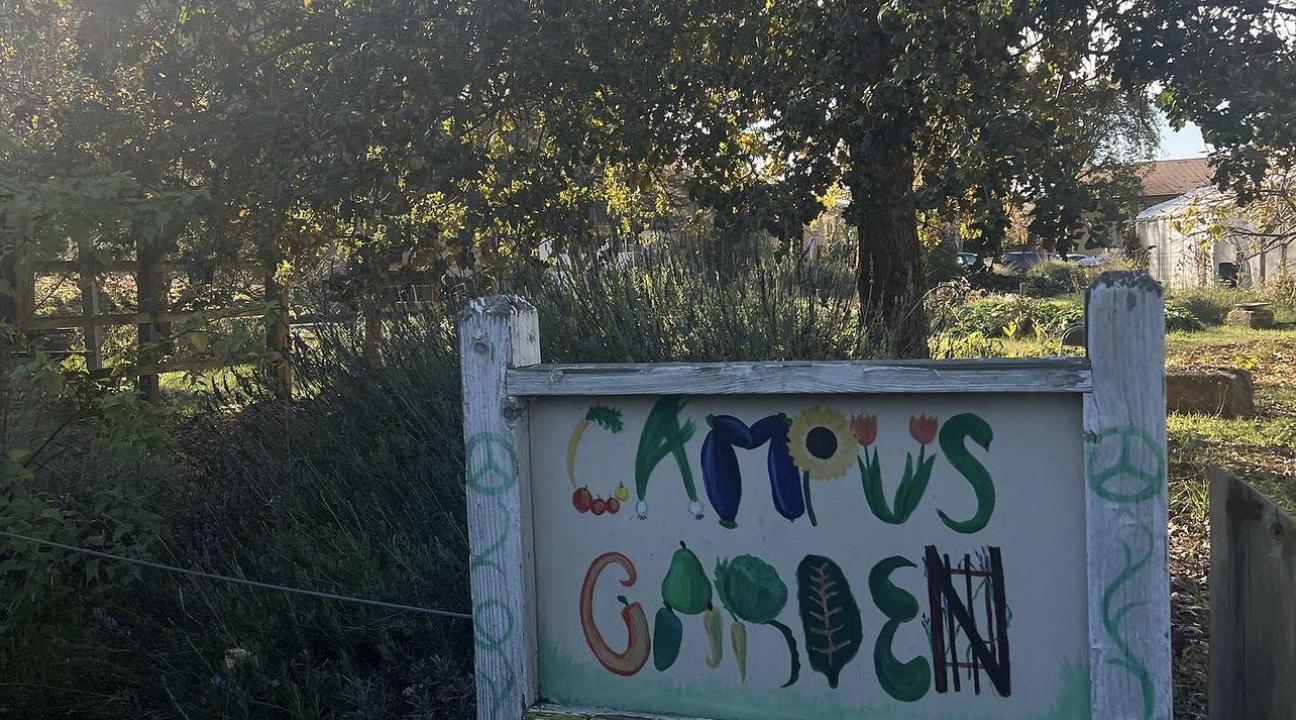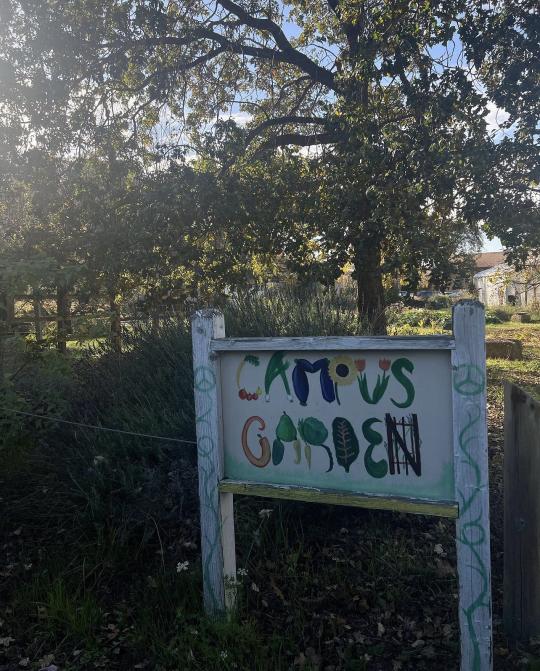SSU Nature Connections
At Sonoma State, we are fortunate to have many opportunities to engage with nature right here on campus. SSU Nature Connections offers many resources to support you in taking advantage of these opportunities to make nature a part of your everyday life.
We have bilingual printer-friendly (PDF) and interactive maps of campus nature sites and opportunities to learn about the places you visit and the plants, animals, and fungi you may encounter there. On this page, you can read evidence-based summaries about the many benefits of spending time in nature. Guided meditations are available to deepen your connection with nature and support your well-being. Whether you are taking a quick breather in the redwoods at the heart of campus, relaxing by the lakes, or walking along Copeland Creek, we invite you to connect with nature at SSU!
Sonoma State Green Spaces
If you are looking to explore the nature connection at SSU, these seven Nature Connection sites are highly recommended places to start.
- 1 - Copeland Creek
- 2 - Butterfly Garden
- 3 - Native Plant Garden
- 4 - Holocaust and Genocide Memorial Grove
- 5 - The University Lakes and Redwood Circle
- 6 - Garden Classroom
- 7 - Vietnam Veterans Grove
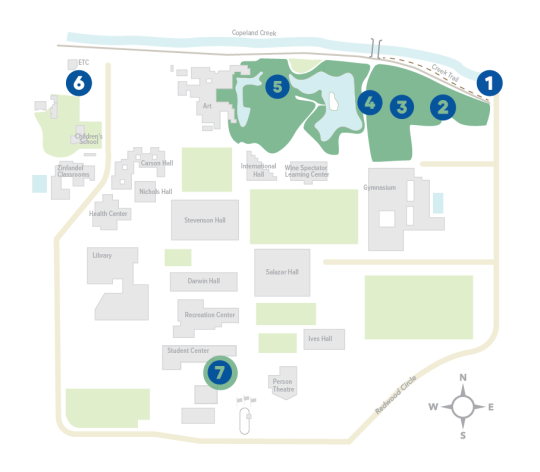
Download the full map in English.
Download the full map in Spanish.
Benefits of Spending Time in Nature
Did you know that spending time in nature is an excellent way to support your well-being?
A recent essay in the "APA Monitor" summarizes evidence that time spent in nature brings mental clarity as well as increased joy. A review article in "Science Advances" lists such psychological benefits of nature-connection as increased happiness, sense of meaning in life, and creativity, as well as decreased stress, anxiety, and depression. Researchers at the College of William and Mary found that students' moods were improved by engaging with brief, 1- and 5-minute guided nature experiences (such as walking a short "mindfulness in nature" trail), or by simply spending 20 minutes outside on their campus, regardless of what they were doing.
Interestingly, spending time outside was especially powerful for students who don't typically engage in outdoor recreation such as hiking or camping. Campuses with green spaces can provide an excellent opportunity for students who may not otherwise get outdoors to reap the psychological benefits of time in nature. Read more about how colleges can make use of the green spaces on their campuses, or simply take a walk on our beautiful campus and see for yourself!
Restore Mental Energy
These days, we all seem to face endless demands on our attention, with busy schedules of work and study, and too little downtime. It isn't surprising that people are feeling increasingly scattered, depleted, and fatigued. We can think of our ability to focus as being like tea in a teacup: we only have a certain amount of it, and when it runs out, our teacup needs to be refilled. How can we "refill the teacup" and replenish our mental energy? Luckily, one of the best cures for mental fatigue is abundant on the Sonoma State campus. A growing body of evidence based on the "Attention Restoration Theory" has demonstrated that time spent in nature is one of the most effective ways to refresh our minds and re-establish clarity and focus.
From early research showing that a 20-minute walk in the woods helped children with ADHD focus (to an extent comparable with taking their medication) to numerous studies on college students and other adults (with or without ADHD), we know that even a short time in nature can work wonders on the mind. In a classic study, students at the University of Michigan recovered more fully from a mentally draining task after a 50-minute walk in a green park than after a walk in an urban area. A recent article reviewing multiple research studies found "green breaks" as short as 10 minutes to be restorative of memory and attention.
So next time you notice that you've read the same page twice and still don't know what it says, put your book or laptop down and go outside. If you have time, walk over to Copeland Creek, or spend some time in the Butterfly Garden. Or if you're crunched for time, just step outside, look at the sky, and feel the breeze on your face. Connect with nature to refill your teacup - your brain will thank you.
Want to learn more? Read this excellent article about experiences in nature and learning.
Reap Health Benefits
One of the best things you can do for your health is to spend more time in nature. The research is clear: time spent in nature promotes health in numerous ways, decreasing blood pressure, diabetes, migraines and heart disease and improving immune function, sleep, and recovery from illness and surgery. Interestingly, it isn't just a matter of being more physically active while outside. Spending quiet time in nature also has substantial health benefits. In fact, the mere appearance or smell of trees can have a healing effect.
One of the early, classic studies of nature and healing found that patients recovering from gall bladder surgery had quicker recoveries and used fewer pain medications if they merely had a view of trees from their hospital rooms, compared to those with views of a brick wall. A more recent study found that exposure to the volatile oil of cypress trees (volatile oils produce the familiar "good tree smells" that we associate with forests) increased the presence of cancer-fighting NK cells. The association between nature and health has become so widely acknowledged that doctors are now starting to write "park prescriptions" to encourage their patients to avail themselves of this enjoyable and free health support. So take a walk along Copeland Creek, or spend a few minutes enjoying the shade of a campus redwood tree, and soak in the benefits.


